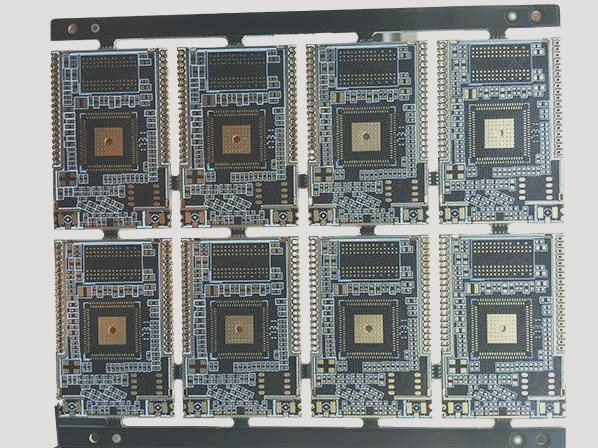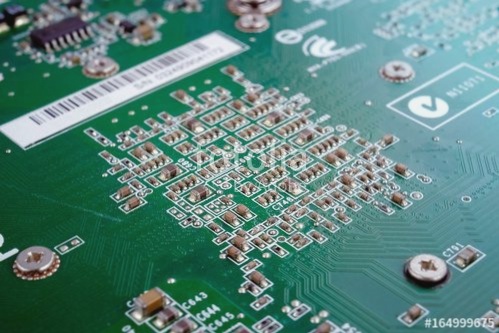1. In addition to maximizing the opportunity for manufacturers to deliver printed circuit boards on time, careful planning and a comprehensive bill of materials are crucial for the proper operation of the circuit.
2. As a manufacturer, if you overlook a detail, you may end up producing substandard printed circuit boards, which can damage your company’s reputation.
3. Therefore, the PCB components used on the circuit board warrant meticulous consideration.
4. At this stage, we have clearly defined the basic requirements for an excellent electronic component list.
5. Manufacturer Part Number (MPN)
6. The Manufacturer Part Number (MPN) is a standardized component code recognized across the entire component procurement channel (such as Mouser, Digikey, Element14, etc.).
7. It consists of a series of numeric and alphanumeric codes provided by the manufacturer to identify specific PCB components on the production line.
8. Through these channels, you can effortlessly obtain the correct MPN.
9. Even if you are using basic components, such as the 555 timer, it is essential to include the manufacturer’s part number.
10. Once the manufacturer’s part numbers are in place, you will conveniently use the correct components when assembling the printed circuit board.
11. MPN at the far end of the PCB components on this board
12. Reference Mark
13. While having a manufacturer part number is important, having a reference mark is also crucial.
14. Typically, the reference mark is represented by one or two letters followed by a number.
15. For example, you might see CR3 on the circuit board; this is a reference mark.

The indicator clearly specifies the PCB components used on the board. Once these components are placed, they facilitate more accurate placement of identical parts during assembly, reducing the likelihood of confusion.
**Description Field**
Like the manufacturer’s part number and reference mark, the description field is also crucial in the development of printed circuit boards. This section typically details the components required and includes critical information intended for assembly line members and end users.
As a PCB manufacturer, the description field allows you to annotate the circuit board with detailed information. This helps in quickly identifying the purpose of each section and in making notes about any special considerations. It also simplifies PCB repairs, as all necessary precautions are clearly documented.
**Quantity**
Finally, the quantity field is essential for ensuring that the number of PCB components is accurate before the assembly process begins. This field helps maintain oversight, especially in automated assembly, where pre-verification of components is necessary.
**Consequences of a Substandard Component List**
A substandard PCB component list can lead to costly manufacturing errors. Mismatched parts and delays can negatively impact your business operations. Sometimes, missing components may force a complete redo of the work, causing delivery delays and additional costs. Properly manufacturing and assembling PCB components is crucial to the functionality of the final device. A well-organized list of electronic components helps avoid many issues that could otherwise delay PCB development or increase its cost. Here are some consequences of using an inferior component list:
**Errors in Prototyping**
Prototyping errors are a common challenge for PCB designers. An ideal prototype is one that meets all specifications perfectly. However, manufacturers often encounter issues or require adjustments due to errors in the component list. Poorly prepared PCB component lists are a primary cause of major prototyping errors. Using unqualified parts or overlooking necessary components can result in prototypes that fail to meet industry standards, leading to costly and time-consuming errors.
**Mismatched Parts**
It is highly frustrating to bring a PCB with incompatible parts to market. In the long run, these boards may not function as intended or may fail completely. A substandard electronic component list will lead to manufacturing circuit boards with mismatched parts, causing delays and increased costs. Often, mismatched parts need to be entirely reworked, which is both expensive and time-consuming.
**Possible Results of Mismatch Between PCB Components and BOM Parts**
**Higher Than Expected Costs**
Manufacturing PCBs, especially multi-layered ones, can be expensive. Manufacturers aim to minimize costs while ensuring some profit. However, many PCB designers face higher-than-expected costs due to a weak component list. An inadequate list may require reworking the entire board to correct errors, leading to higher costs. Fortunately, a complete component list allows you to identify and source all necessary parts early on, helping to avoid unnecessary expenses.
**PCB Development Delay**
Delays in PCB development can result in lost customers. Manufacturers who take too long to deliver risk frustrating their clients. A weak component list complicates the manufacturing process and can cause delays. Incomplete documentation necessitates additional time to source missing parts, affecting the overall timeline.
**Delayed Operations**
PCB production is a complex and large-scale process requiring a comprehensive component list. Delays often stem from an incomplete list that lacks necessary parts. An incomplete list hampers the timely start and smooth execution of production, risking customer dissatisfaction and loss to competitors who deliver on time.
2. As a manufacturer, if you overlook a detail, you may end up producing substandard printed circuit boards, which can damage your company’s reputation.
3. Therefore, the PCB components used on the circuit board warrant meticulous consideration.
4. At this stage, we have clearly defined the basic requirements for an excellent electronic component list.
5. Manufacturer Part Number (MPN)
6. The Manufacturer Part Number (MPN) is a standardized component code recognized across the entire component procurement channel (such as Mouser, Digikey, Element14, etc.).
7. It consists of a series of numeric and alphanumeric codes provided by the manufacturer to identify specific PCB components on the production line.
8. Through these channels, you can effortlessly obtain the correct MPN.
9. Even if you are using basic components, such as the 555 timer, it is essential to include the manufacturer’s part number.
10. Once the manufacturer’s part numbers are in place, you will conveniently use the correct components when assembling the printed circuit board.
11. MPN at the far end of the PCB components on this board
12. Reference Mark
13. While having a manufacturer part number is important, having a reference mark is also crucial.
14. Typically, the reference mark is represented by one or two letters followed by a number.
15. For example, you might see CR3 on the circuit board; this is a reference mark.

The indicator clearly specifies the PCB components used on the board. Once these components are placed, they facilitate more accurate placement of identical parts during assembly, reducing the likelihood of confusion.
**Description Field**
Like the manufacturer’s part number and reference mark, the description field is also crucial in the development of printed circuit boards. This section typically details the components required and includes critical information intended for assembly line members and end users.
As a PCB manufacturer, the description field allows you to annotate the circuit board with detailed information. This helps in quickly identifying the purpose of each section and in making notes about any special considerations. It also simplifies PCB repairs, as all necessary precautions are clearly documented.
**Quantity**
Finally, the quantity field is essential for ensuring that the number of PCB components is accurate before the assembly process begins. This field helps maintain oversight, especially in automated assembly, where pre-verification of components is necessary.
**Consequences of a Substandard Component List**
A substandard PCB component list can lead to costly manufacturing errors. Mismatched parts and delays can negatively impact your business operations. Sometimes, missing components may force a complete redo of the work, causing delivery delays and additional costs. Properly manufacturing and assembling PCB components is crucial to the functionality of the final device. A well-organized list of electronic components helps avoid many issues that could otherwise delay PCB development or increase its cost. Here are some consequences of using an inferior component list:
**Errors in Prototyping**
Prototyping errors are a common challenge for PCB designers. An ideal prototype is one that meets all specifications perfectly. However, manufacturers often encounter issues or require adjustments due to errors in the component list. Poorly prepared PCB component lists are a primary cause of major prototyping errors. Using unqualified parts or overlooking necessary components can result in prototypes that fail to meet industry standards, leading to costly and time-consuming errors.
**Mismatched Parts**
It is highly frustrating to bring a PCB with incompatible parts to market. In the long run, these boards may not function as intended or may fail completely. A substandard electronic component list will lead to manufacturing circuit boards with mismatched parts, causing delays and increased costs. Often, mismatched parts need to be entirely reworked, which is both expensive and time-consuming.
**Possible Results of Mismatch Between PCB Components and BOM Parts**
**Higher Than Expected Costs**
Manufacturing PCBs, especially multi-layered ones, can be expensive. Manufacturers aim to minimize costs while ensuring some profit. However, many PCB designers face higher-than-expected costs due to a weak component list. An inadequate list may require reworking the entire board to correct errors, leading to higher costs. Fortunately, a complete component list allows you to identify and source all necessary parts early on, helping to avoid unnecessary expenses.
**PCB Development Delay**
Delays in PCB development can result in lost customers. Manufacturers who take too long to deliver risk frustrating their clients. A weak component list complicates the manufacturing process and can cause delays. Incomplete documentation necessitates additional time to source missing parts, affecting the overall timeline.
**Delayed Operations**
PCB production is a complex and large-scale process requiring a comprehensive component list. Delays often stem from an incomplete list that lacks necessary parts. An incomplete list hampers the timely start and smooth execution of production, risking customer dissatisfaction and loss to competitors who deliver on time.



